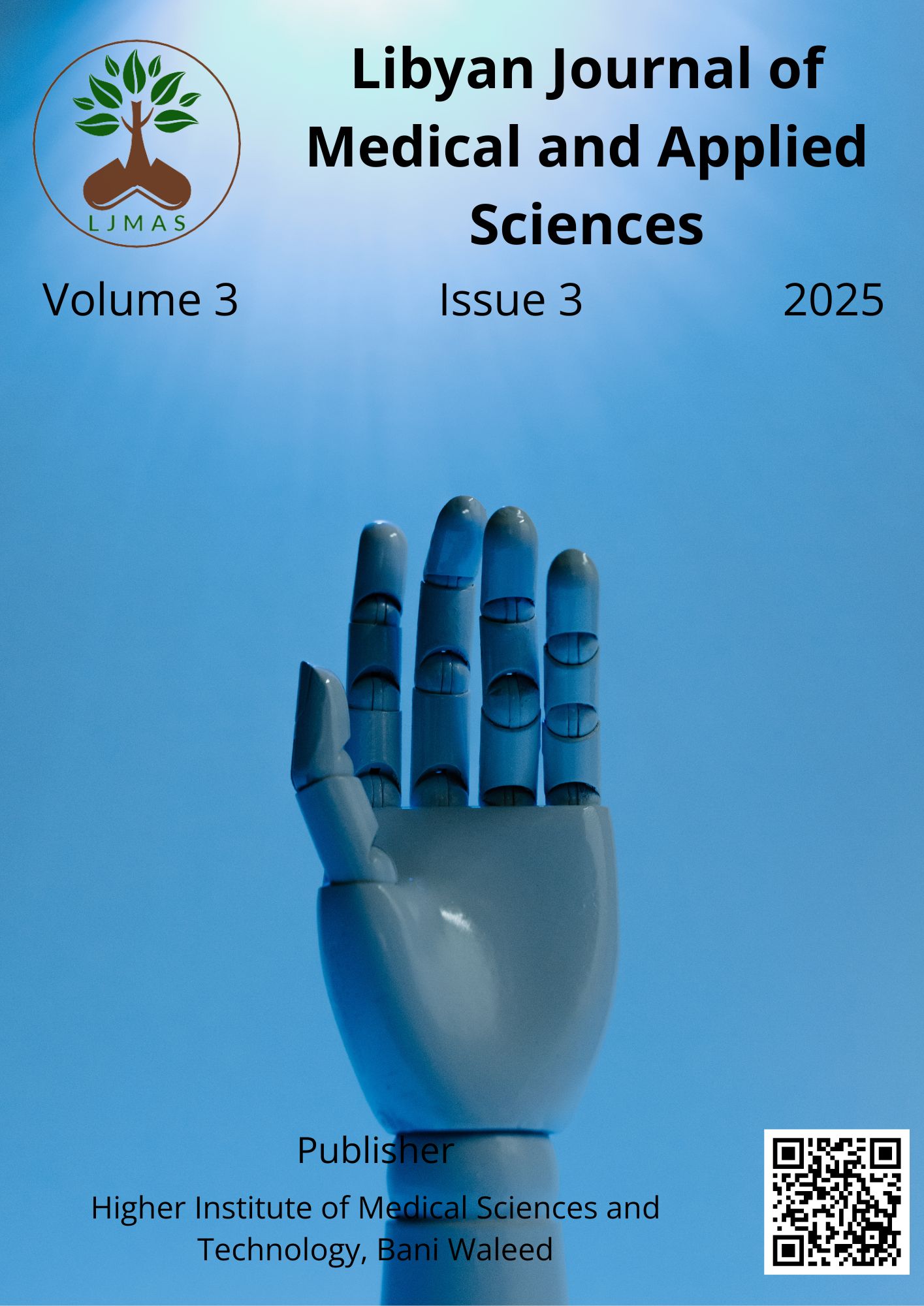Prevalence of obesity among type II diabetes patients attending Outpatient clinic at Alwahda Teaching Hospital: A Cross-Sectional Study.
Main Article Content
Abstract
Background: Type 2 diabetes mellitus (T2DM) and obesity are closely interlinked global health challenges, both contributing significantly to morbidity and mortality. In Libya and other countries in the Middle East and North Africa region, both conditions are rising in prevalence. However, there is limited local data on the co-prevalence of obesity among diabetic patients. This study aims to assess the prevalence of obesity among T2DM patients attending the outpatient clinic at Alwahda Teaching Hospital and to explore associated demographic and clinical characteristics.
Methods: A cross-sectional study was conducted among type 2 diabetic patients attending the outpatient clinic at Alwahda Teaching Hospital. Data were collected using a structured interview format and patient medical records. Anthropometric measurements, including weight and height, were obtained to calculate body mass index (BMI), which was categorized according to WHO classifications. Demographic and clinical data such as age, gender, duration of diabetes, and treatment type were also recorded.
Results: the study included 358 type 2 diabetic patients. Their median age was 54.0 years. 64.5% of them were female. The majority pf the participants were married and received secondary education or higher. The prevalence of obesity was 55.6%. The binary logistic regression model indicates a significant association with female sex, presence of other comorbid conditions, family history of obesity and /or diabetes and no / irregular exercise.
Conclusion: the study reveals a substantial burden of obesity among T2DM patients, particularly among women, those with chronic comorbidities, family history, and sedentary lifestyles. Addressing this multifaceted challenge demands personalized, gender-sensitive, and multidisciplinary approaches integrating lifestyle modification, medical care, and surgical options to improve health outcomes.
Article Details

This work is licensed under a Creative Commons Attribution 4.0 International License.





